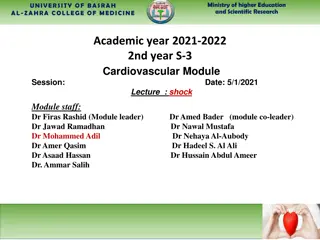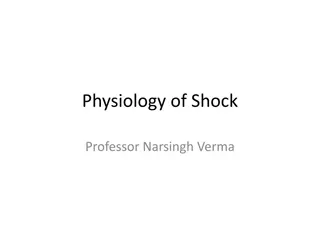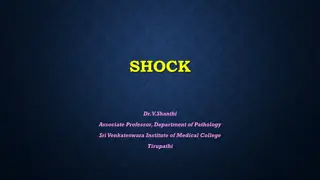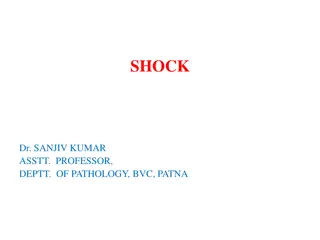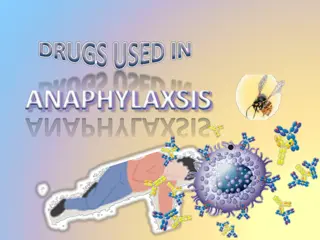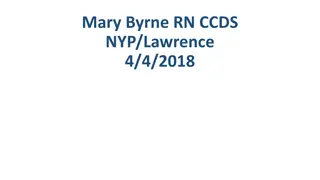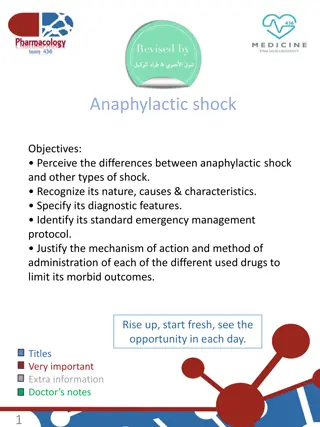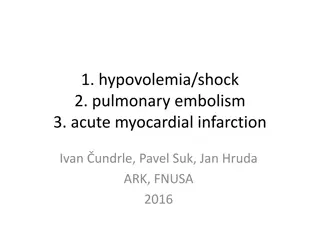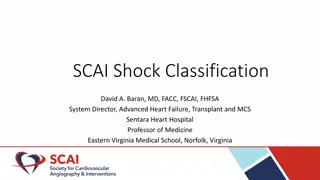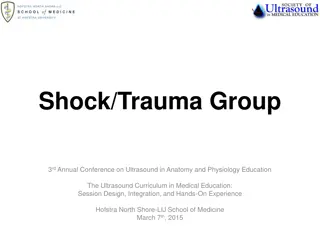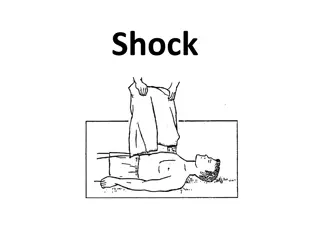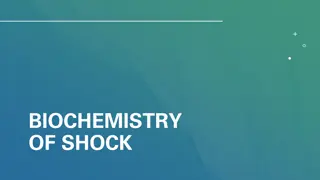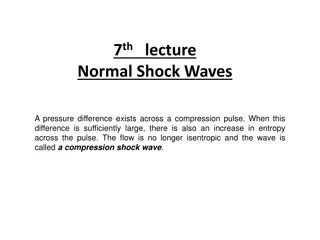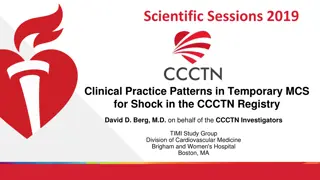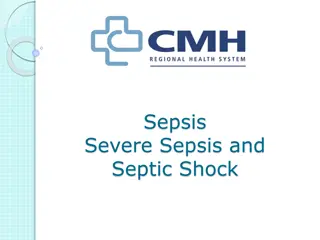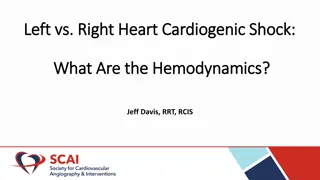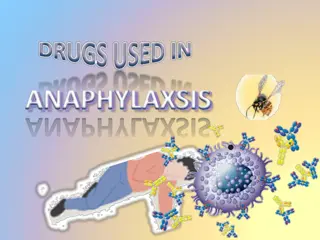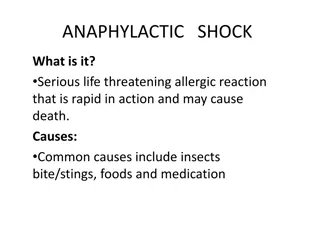Understanding Shock: Types, Classification, and Clinical Course
Shock is a critical state where the circulatory system fails to adequately perfuse cells, leading to oxygen and nutrient delivery reduction. It can be classified into hypovolemic, cardiogenic, and distributive types, with septic shock caused by microbial infections. Shock progresses through stages from initial compensatory mechanisms to irreversible organ damage. Organs are severely affected in septic shock, leading to widespread tissue hypoperfusion. Clinical manifestations of shock include weak pulse, rapid heart rate, tachypnea, cool clammy skin, and cyanosis.
Download Presentation

Please find below an Image/Link to download the presentation.
The content on the website is provided AS IS for your information and personal use only. It may not be sold, licensed, or shared on other websites without obtaining consent from the author. Download presentation by click this link. If you encounter any issues during the download, it is possible that the publisher has removed the file from their server.
E N D
Presentation Transcript
8-Shock Shock is a state in which there is failure of the circulatory system to maintain adequate cellular perfusion resulting in widespreadreductionindeliveryofoxygen&othernutrients totissues.
Classification of shock Classification of shock Shockcanbedividedinto: A A..Hypovolemic B B.. Cardiogenic cardiacperformance. C C..Distributive caused by profound peripheral vasodilatation despite normal or high cardiacoutput. Hypovolemicshock Cardiogenic shock shock::Thisisshockcausedbyreducedbloodvolume. shock:: This is shock that results from severe depression of Distributiveshock shock::Distributiveshockreferstoagroupofshocksubtypes
Septic shock This is a kind of shock caused by systemic microbial infection, most commonly by gram negative infection (endotoxic shock) butcanalsooccurwithgram positiveorfungalinfections.
Stages of shock Stages of shock 11) ) An An initial period, during which compensatory mechanisms are activated & perfusion of vital organsmaintained. 2 2..Progressive withonsetofworseningcirculatory&metabolicimbalancesincludingacidosis. 3 3..An Anirreversible survivalisnotpossible. initial nonprogressive nonprogressive phase phase : It is also called a period of early compensatory Progressivestage stage(Established (Establishedshock) shock)::Thisischaracterizedby tissuehypoperfusion irreversiblestage stage:Astageatwhich,evenifhemodynamicdisordersarecorrected
Morphology of septic Morphology of septic shock shock Allorgansareaffectedinsevereshock.Inshock,thereiswidespreadtissue hypoperfusioninvolvingvariousorganssuchastheheart,brain,&kidney. Thisleadstowidespreadhypoxictissuenecrosis.
Clinical course of shock Clinical course of shock Patientwithshockmaymanifestashavinga 1-weak. 2-rapidpulse. 3-tachypenia. 4-cool. 5-clammy. 6-cyanoticskin.



